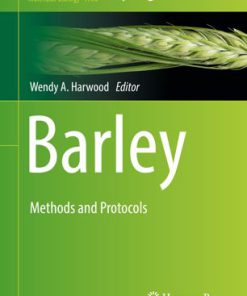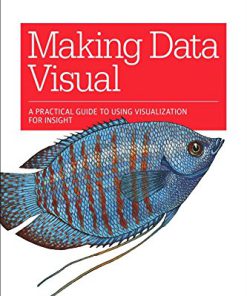Schema Re schematized A Space for Prospective Thought 1st Edition by Harwood Fisher ISBN 3319482750 9783319482767
$50.00 Original price was: $50.00.$25.00Current price is: $25.00.
Schema Re schematized A Space for Prospective Thought 1st Edition by Harwood Fisher – Ebook PDF Instant Download/Delivery: 3319482750, 9783319482767
Full download Schema Re schematized A Space for Prospective Thought 1st Edition after payment

Product details:
ISBN 10: 3319482750
ISBN 13: 9783319482767
Author: Harwood Fisher
This volume expands the concept and role of the schema, with three goals in mind: 1) to outline the continuing issues in the schema concept as the legacy of Kant’s concept and analysis, 2) to show that Kant’s challenges resulted in successful but truncated views of the schema and its functions, 3) to reconstruct Otto Selz’s schema concept by proposing an alternative. The basis and scope of Selz’s schema were intended to yield a more complete follow-up to Kant’s challenges. These had emerged out of his unresolved view of the schema as knowledge, on one hand, and thought, on the other. Sel’z concepts—‘anticipatory schema,’ ‘coordinate relations,’ and ‘knowledge complex’—are more inclusive and psychologically dynamic than those of the influential but reductionist theorists: Piaget, Bartlett, and Craik. Harwood Fisher explores Sel’z ideas in past, present, and future temporal contexts. His predecessors’ and his contemporaries’ ideas influenced him. Present-day needs and future prospects round out a Selzian conception of the schema that would enrich a psychology of thought and knowledge.
Schema Re schematized A Space for Prospective Thought 1st Table of contents:
1 Introduction: Following the Kantian Dilemmas and Grand Conception
Purpose and Course
Definitions of Terms
The Schema’s Temporal and Spatial Sequence
Object/Action Outcomes, Sentences, and Logic
Logical Possibilities in Extending the Schematic Pattern
Productive Thinking and New Patterns
The Breadth of Kant
Selz as Standard Bearer: Re-awakening Kant’s Questions
Analogy as Central to Thinking about the Schema
The De Facto Major Views of the Schema
The Prospective for Enrichment
Otto Selz’s Approach: How Far Could He Go?
The Knowledge Structure
Kant’s Concept of Analogy: The Dynamic Basis for Selz’s Logic of the Anticipatory Schema
The Logic of Correspondence and of Constituting a ‘Whole’
Selz’s Anticipatory Schema as an Analogy that Reaches for the Knowledge Complex
From Completing a Schema for an Unknown to Achieving Its Extension in a Knowledge Complex
‘Part to Whole’ Summarized in Selz’s Terms and Carried Further by Analogy
2 Historical Crosscurrents and Conceptual Syntheses
Historical Perspective on the Schema Concept’s Issues
The Nuclear Role of Kant’s Approach to the Dilemmas of Knowledge
Building to the Schema as a Mediating Device
Kant in a Time Warp
Sources of the Present View of the Schema: The Perch from which to Look Back at Kant
Angles of Reconstruction
Fundamental Issues Kant Faced
Past Precursors of Kant’s Way of Thinking and Future Perspectives from Which to Think About His Co
Aristotle’s Move to Thought as Art
Mediating: Kant’s Schema as Mediator
The Schema’s Dynamic Potentials and Selz’s Objective
The Schema as a Mediating Representation
Part/Whole Reorganizations and Genus–Species Exchanges
Analogy Progression, Refinement of Particulars, and New Possible Worlds for Diagrams
Diagramming to Show Oppositions and to Make Dynamic Resolutions
Is the Device a Tour De Force or a Trompe L’oeil?
In Search of Kant’s Schema as ‘Knowledge’: Schemas, Mediators, and the Need for Rationality
The Schema’s Logic Versus Imagination Travail
Possible Impossibilities for a Mediating Function to the Schema
Meta-logic Is Not Enough for New Possibilities
Kant’s View of the Schema
The Two Versions of Knowledge: Thought and Language
A Device with Inaccessible Origins
Views of the Schema that Take It from an Art to an Accessible Form
The Art of the Soul in Unconscious Thought and the Cognitive Transformations to Accessible Schema
Schema as Language and Its Direct Route to Information
Picturing Kant from the Perspectives of Concepts of the Past and of Concepts that Are Presently Infl
Within, Between, and Outside Information’s Grasp
The Road to the ‘Frame’ Is Paved with Good Intentions of Pressing Kant’s Views into Sciences o
Major Views of the Schema
Exchange of Dilemmas
From Kant’s Dilemma—Distance Between Thought and Representation—To the Present-Day Dilemma—T
Structure and Dynamics: Contraries in the Interaction of the Schema and Knowledge
Knowledge as Representation: It’s Turtles All the Way Down!
Kant’s Logical Dilemmas and the AI Concepts
The Turtles of Regress: An Alternative in the Violation of Bounds
The Schema and the Role of Analogy in Accommodating the Transformation of Spaces
The Road Less Travelled and Selz’s Signposts
Selz’s Shuttle Between Abstractions and Particularities
Frames Versus the Kantian Quest for Harnessing the Powers of Thought: Analogy as the Bridge
Recursion in Thought Versus Circularity that Never Gets to Thought
Analogical Structure in the Schematic Reflection of Knowledge
Dynamic Representation and the Mediator
Twists and Overlaps in the Ordering of Schematic Spaces
Analogy, Coordinates, Symbolic Representations
Resolving and Not Resolving Kantian Issues
Selz and Those Immediately Around Him
Schema, Analogy, and Thinking
The Psychology of Structure in Thinking: Analogy as Psychological Structuring
Structural Formations and Coordinate Relations
The Creative Transformations of Analogically Exchanging the Role of Particulars
The Saga of Selz—Living with Incomplete Knowledge Complexes
Get Off the Analogical Exchange Merry-Go-Round at the Establishment of Coordinate Relations
The Historical Reconstruction as Resurrection of Selz’s Thinking
History and the Conquest of Fate
Connecting by Looking Across the Ocean
Re-statement of the Re-positioning in Selz’s Views
Analogy Within the Schema to Apprehend and Explore New Relations
Selz’s Resolution of the Gaps Between Induction and Analogy in Kant’s Logic
A Topological Version of Kant’s Puzzling Logic of the Schema
Looking at the Kantian Puzzles as Topological Depictions of Spatial Relations
3 Concluding Issues and Implications
Expressing the Unknown Within the Schema
Diagramming Thought and Knowledge in a Borromean Twist
Analogy’s Unraveling of the Twist to Reverse Logical Exclusion
Selz’s Analogy Relating the Anticipatory Schema to the Schema
Selz’s Coordinate Relations
The Schema Is a Cognitive Object that Has Cognitive Objects
Selz’s Analogy as a Psychological Form of Thought
Thought Versus Representation
The Unknown as a Point in a Progression
Reproduction of the Schema’s Coordinating Relations
Selz’s Concept of the Schema’s Depictive Powers in Relation to Knowledge and Representation
Psychological Processing to Achieve Logical Structuring
Identity Achieved Despite and Because of the Presence of Unknowns
The Schema’s Final Cause’s Reach for a New Analogical Status
Instantiating the Schema
Selz’s View of the Schema’s Representational Range: Abstraction and Symbolizing
Diagramming
The Conceptual Organization of Knowledge as a Structure of Coordinates
Dynamic Change
Dynamism and Logic a Combination Enhancing the Concept of the Schema
Anticipatory Logic and the Cognitive Object
Pulling Together Slotting of Abductive Guesses, and the Logic of Analogy’s Advance to a Knowledge
The Logic and the Classificatory Structure of Selz’s Anticipatory Schema
Logic of the Anticipatory Schema
Classificatory Elements and Structure
The Elevation of the Particular to a Genus
Analogy’s Psychological Move from Logical Classes to Psychological Concepts
The Aesthetic Idea, Irrationality, and Phases of Art and Science
The Opposite and the Unexpected
Concluding Summary: Change Infused into the Schema and its Effects on the Psychology of Thinking abo
Adding up the Present Constraints
Support for a Language-Based Version of Thought and a Schematic Base for Both
With All This Two-Way Determinism, How Can the Schema Lead to Changeability—Productive Thinking?
Implications of Selz’s Schema Concept for Change in Psychology
Psycholinguistics Influence on Psychology: The Empirical Resolution to Kant’s Schema Concept
Implications for a Present-Day Psychology
Analogy as a Route to a Selzian Dynamic Schema
Selz and the Road Beyond the Logical Read of the Schema: A Form for Discovery
Appendices
Appendix A: Three Approaches to Time Interactions in Historical Reconstruction
An Example of Perspectives on Perspectives
The Frame Concept’s Subtractions
Appendix B: Conceptual Terms and Perspectives in Selz’s Use of Analogy
Appendix C: Analogy Recursions, the Use of Analogy Progressions
Analogy Recursion, Individual Thinking, and Historical Evidence
Progressions of Analogy
Analogy as progression.
People also search for Schema Re schematized A Space for Prospective Thought 1st:
schema re-schematized: a space for prospective thought
schema reinterpretation
schema restructuring
schema reading
schema recognition
Tags:
Harwood Fisher,Schema Re schematized,Prospective
You may also like…
Biography & Autobiography - Medical
Uncategorized
Decoding the Ethics Code A Practical Guide for Psychologists 4th Edition Celia B. Fisher
Mathematics
Computers - Networking
Making Data Visual A Practical Guide to Using Visualization for Insight 1st Edition Danyel Fisher
Fiction - Contemporary Fiction












